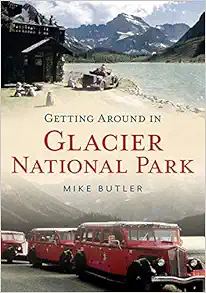After it acquired Buswell’s complete works, the Montana Historical Society partnered with the University of Montana Press to bring those photographs out in The Quest.
From the Publisher
 Richard S. Buswell has created images of some of Montana’s most haunting relics of the settler period. Ghost towns can have an eerie allure or architectural charm, but Buswell’s technique captures more than decrepit buildings and historic trash. To date, Buswell’s work has hung in exhibits worldwide, is held in over two hundred museum collections, nationally and internationally, and has been the focus of six books.
Richard S. Buswell has created images of some of Montana’s most haunting relics of the settler period. Ghost towns can have an eerie allure or architectural charm, but Buswell’s technique captures more than decrepit buildings and historic trash. To date, Buswell’s work has hung in exhibits worldwide, is held in over two hundred museum collections, nationally and internationally, and has been the focus of six books.
“The Quest” showcases seventy-one arresting photographs, a powerful collection that carries readers into an evocative and contemplative space where images of a deteriorating past are captured to bring out their hidden beauty. The abandoned material things of everyday life take on new energy through his camera lens, strange and wonderful. This is a journey between a receding past and the magical present.
About the Author
 “The 78-year-old Buswell is retracing footsteps of his childhood, when he would go ghost-towning with his parents.
“The 78-year-old Buswell is retracing footsteps of his childhood, when he would go ghost-towning with his parents.
“In the past half-century, he’s carried a 42-pound backpack of camera equipment on his mostly lone sojourns on weekends.
“’Hiking alone has attuned me to sights and sounds that I would otherwise miss. The sound of quiet causes me to lose my hurry.’”
“During this photo career he’s taken a total of 534 photos. One year, “’I only took one photo,’” he said during an interview at his kitchen table in his Helena home with his wife Sue, who assisted with details of the book.
“Yale University and the Montana Historical Society are the only ones to buy his entire collection of photos; 232 other museums have partial collections.
–Malcolm









 What would I do there, she wondered. I said that I’d hire on at a sheep ranch and/or drive concessionaire busses trucks in Glacier National Park.
What would I do there, she wondered. I said that I’d hire on at a sheep ranch and/or drive concessionaire busses trucks in Glacier National Park.




 Portraits can reveal a lot about people and their times, if you know how to look for clues, notes Amanda Streeter Trum, curator of collections at MHS. Examining objects in the artwork, considering the backdrop, and observing the artist’s color palette reveal important information about the subject of the art.
Portraits can reveal a lot about people and their times, if you know how to look for clues, notes Amanda Streeter Trum, curator of collections at MHS. Examining objects in the artwork, considering the backdrop, and observing the artist’s color palette reveal important information about the subject of the art.